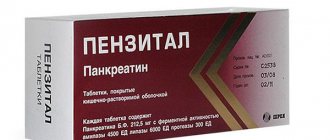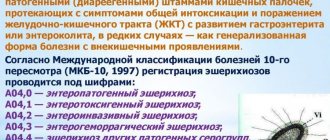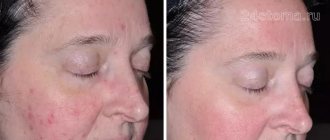New anticoagulant drug – fondaparinux
About the article
6990
0
Regular issues of "RMZh" No. 18 dated 08/19/2009 p. 1090
Category: Cardiology
Authors: Laguta P.S. , Karpov Yu.A. 1 1 Federal State Budgetary Institution "National Medical Research Center of Cardiology" of the Ministry of Health of Russia, Moscow, Russia
For quotation:
Laguta P.S., Karpov Yu.A. A new anticoagulant drug is fondaparinux. RMJ. 2009;18:1090.
Thrombosis, both arterial and venous, is an important problem in modern medicine. The consequence of arterial thrombosis is the development of such serious complications as myocardial infarction, stroke, and gangrene of the lower extremities. Venous thrombosis combines two closely related diseases according to the conditions of occurrence and clinical manifestation: deep vein thrombosis of the lower extremities (DVT) and pulmonary embolism (PE). These interrelated diseases often lead to fatal outcome and the development of complications such as pulmonary hypertension and post-thrombophlebitis syndrome.
Thrombosis, both arterial and venous, is an important problem in modern medicine. The consequence of arterial thrombosis is the development of such serious complications as myocardial infarction, stroke, and gangrene of the lower extremities. Venous thrombosis combines two closely related diseases according to the conditions of occurrence and clinical manifestation: deep vein thrombosis of the lower extremities (DVT) and pulmonary embolism (PE). These interrelated diseases often lead to fatal outcome and the development of complications such as pulmonary hypertension and post-thrombophlebitis syndrome. Despite the significant differences in the pathogenesis of arterial and venous thrombosis, what they have in common is the activation of the hemocoagulation system. The key enzymes in the coagulation cascade are thrombin and factor Xa. Thrombin is a multifunctional enzyme and, in addition to converting fibrinogen into fibrin, it is a powerful inducer of platelet aggregation, is able to enhance its own formation, and when interacting with receptors on intact endothelium, also activates the anticoagulant system. Thrombin also takes part in tissue healing processes and regulates the fibrinolysis system. Factor Xa is common to the extrinsic and intrinsic pathways of blood coagulation activation. This factor, as part of the prothrombinase complex, activates the formation of thrombin. It is known that the amount of activated factor formed from inactive precursors increases significantly at each level of the coagulation cascade [1]. In particular, it was estimated that one molecule of factor Xa catalyzes the formation of about 1000 molecules of thrombin. Thus, inactivation of factor Xa seems to be preferable to direct action on thrombin, and in this regard, it is not surprising that it was chosen as the main target for modern anticoagulants. Anticoagulant drugs are a mandatory component of the treatment of arterial and venous thrombosis. Injectable forms of anticoagulants are represented by unfractionated heparin (UFH), low molecular weight heparins (LMWH), pentasaccharides (fondaparinux, idraparinux) and direct thrombin inhibitors (hirudin, argatroban, bivalirudin). To perform their anticoagulant function, heparins and pentasaccharides require a cofactor, antithrombin III, which is why they are also called indirect thrombin inhibitors. The effectiveness of injectable forms of anticoagulants has been proven in all forms of acute coronary syndrome (ACS) and venous thrombosis. Heparins and bivalirudin are also needed during coronary angiography (CAG) and percutaneous coronary intervention (PCI), as well as for anticoagulant support during cardioversion in patients with atrial fibrillation (AF). Vitamin K antagonists (warfarin), traditionally called indirect anticoagulants in our country, inhibit the formation of four vitamin K-dependent proteins in the liver and ultimately also reduce thrombin formation. These drugs are currently the only oral anticoagulants that have demonstrated their effectiveness from the point of view of evidence-based medicine. Vitamin K antagonists are indicated for long-term treatment of patients who have experienced an episode of DVT/PE, as well as for the prevention of stroke and systemic embolism in AF and in patients with artificial heart valves. Large clinical trials are currently underway using oral direct factor X inhibitors (apixaban and rivaroxaban) for various conditions requiring long-term antithrombotic therapy (ACS, MA, DVT/PE). Heparin (UFH) is the oldest representative of the group of anticoagulants, known for more than 90 years. In 1970, Rosenberg et al. described its anticoagulant effect associated with interaction with antithrombin III. Heparin is a heterogeneous mixture of polysaccharides that differ from each other: molecular weight, pharmacological properties, anticoagulant activity. Only about a third of UFH molecules bind to antithrombin III and provide its main anticoagulant effect. The heparin-antithrombin III complex inactivates several activated coagulation factors: thrombin, Xa, IXa, XIa, XIIa. However, thrombin and factor Xa are the most sensitive to inhibition by the heparin–antithrombin III complex. The molecular mechanisms of thrombin and factor Xa inhibition differ from each other. To inhibit thrombin, heparin must bind to both antithrombin III and thrombin. Moreover, to bind to thrombin, the heparin molecule must be long and contain at least 18 sucrose residues. This is necessary, since heparin in this case acts not only as an activator of antithrombin III, but also as a matrix that ensures effective interaction between the inhibitor and the enzyme. At the same time, to inhibit factor Xa, only the connection of heparin with antithrombin III is necessary; the connection of heparin with factor Xa is not needed. To activate antirhombin III with heparin, only the presence of a high-affinity pentasaccharide is sufficient, the synthetic modified molecule of which is a new anticoagulant drug - fondaparinux (Arixtra). Unfortunately, UFH has a number of significant disadvantages that hinder its use in clinical practice. The most important of them is the variability of anticoagulant and antithrombin effects, which is due to the high degree of binding of UFH to plasma proteins. The intravenous (IV) route of administration of the drug is preferable, since the bioavailability with the subcutaneous (SC) route of administration is even lower. When carrying out UFH therapy, one should avoid prescribing fixed doses of the drug, but select it in accordance with the patient’s body weight, under the control of activated partial thromboplastin time (aPTT). The therapeutic “window” of APTT values is quite narrow – 50–75 s, or 1.5–2.5 times the existing laboratory norm. Higher aPTT values are associated with an increased risk of bleeding, without additional clinical benefit, and with aPTT values less than 50 s, the therapeutic effect is questionable. The consequence of this is the need for frequent monitoring of APTT values. An additional difficulty is that the APTT test is not standardized. There are differences in the sensitivity of determining APTT among reagents produced by different manufacturers. It is currently recommended to calibrate the therapeutic aPTT range for each reagent used. The anticoagulant effect of UFH ceases several hours after the end of the IV infusion, and there are frequent cases of “withdrawal syndrome” of the drug, which is associated with reactivation of the hemocoagulation system, despite concomitant antiplatelet therapy. UFH binds not only to plasma proteins, but also to endothelial cells, platelets, macrophages, etc., which causes a certain unpredictability of the drug's action. In addition to the well-known hemorrhagic complications, arterial and venous thrombosis may occur during UFH therapy. Mention should be made of heparin-induced thrombocytopenia (HIT), which can occur after 5–10 days of heparin treatment. HIT occurs three times more often with UFH than with LMWH and is associated with the formation of autoantibodies to platelet factor 4, which is altered by heparin. The criterion for HIT is a decrease in platelets by 50% from the initial level after 5–10 days of heparin therapy. The danger of HIT lies in the occurrence of thrombotic complications or skin necrosis due to thrombosis of the world circulation. Thrombosis that occurs against the background of HIT is associated with activation of platelets by antibodies circulating in the bloodstream and can be either arterial or venous. In approximately 25–30% of all cases of HIT, platelet counts decrease early in heparin treatment and usually occur in patients who have recently received heparin and have platelet antibodies. Low molecular weight heparins (enoxaparin, dalteparin and nadroparin) do not have many of the disadvantages of UFH, which makes them an attractive alternative in the treatment of arterial and venous thrombosis. They bind to plasma proteins to a lesser extent and have better bioavailability (about 90%, for UFH - 38%), allowing these drugs to be administered subcutaneously without reducing the effect compared to intravenous administration. Low molecular weight heparins provide a more predictable anticoagulant effect, are dosed according to the patient's weight and do not require laboratory monitoring. Unlike unfractionated LMWHs, they have predominantly anti-Factor Xa activity. LMWHs are less sensitive to platelet factor 4, have less effect on platelets and cause fewer thrombocytopenias. It should be noted that the methods for obtaining LMWHs differ from each other, which affects their pharmacokinetic properties and anticoagulant activity. The ratio of anti-Xa and antithrombin activities also varies and ranges from 2:1 to 4:1. Despite the unifying name LMWH, each drug in this group has its own unique properties, so it is impossible to automatically extrapolate the results of clinical studies using one drug to another. For example, clinical advantages over UFH in terms of reducing the risk of death, myocardial infarction and the need for emergency revascularization in patients with ACS without ST segment elevation on the ECG were noted only with the use of enoxaparin [2]. Regarding the use of dalteparin and nadroparin in patients with ACS without ST segment elevations on the ECG, all that is known is that they are not inferior in effectiveness to intravenous administration of UFH [3,4]. Fondaparinux (Arixtra) is the first synthetic selective activated factor X inhibitor approved for clinical use. The chemical structure of fondaparinux is based on the natural structure of a pentasaccharide containing high affinity for antithrombin III, contained in UFH and LMWH [5]. By selectively binding to antithrombin III, fondaparinux potentiates (approximately 300-fold) the initial neutralization of factor Xa by antithrombin III. Neutralization of factor Xa interrupts the coagulation cascade, inhibits thrombin generation and, consequently, thrombus formation. Fondaparinux does not inactivate already formed thrombin and does not affect platelets. Due to 100% bioavailability after subcutaneous administration and a half-life of 17 hours, it is sufficient to administer the drug once a day. Fondaparinux does not affect the results of routine coagulation tests such as thrombin, prothrombin time/INR, and activated clotting time. At high concentrations, the drug has little effect on APTT values. Fondaparinux does not form complexes with platelet factor 4, and no cases of HIT have been described with its use. About 70% of fondaparinux is excreted unchanged through the kidneys. Elimination of fondaparinux is reduced if renal function is impaired and may increase the risk of bleeding. Fondaparinux was studied in 5 studies in patients with ACS [6–10], of which two, OASIS-5 and OASIS-6 [9–10], were large-scale phase 3 studies that gave rise to subsequent recommendations for the use of the drug. The dose of fondaparinux is 2.5 mg/day. was recognized as having the best efficacy/safety profile in phase 2 studies [7,8] and was subsequently used in OASIS-5 and 6. The OASIS-5 study [9] compared the efficacy and safety of fondaparinux versus enoxaparin in patients ACS without ST segment elevations on the ECG. 20,078 patients with a clinical picture of ACS without ST segment elevation on the ECG within 24 hours of the onset of symptoms were included. They were randomized into two groups: those receiving enoxaparin 1 mg/kg - 2 times a day. or fondaparinux 2.5 mg/day. The duration of administration of both drugs was on average 5, maximum 8 days, the observation period was 180 days. In terms of the effect on the primary endpoint (death, myocardial infarction, refractory ischemia at 9 days), the effectiveness of both drugs was identical, but the use of fondaparinux compared with enoxaparin was accompanied by a significant decrease in the number of major bleedings over the same period of time (2.2% vs 4. 1%, p<0.001 respectively). A reduction in major bleeding with fondaparinux was observed in patients with creatinine clearance <30 ml/min. (2.4% vs. 9.9%, p–0.001), and in individuals with creatinine clearance > 30 ml/min (2.2% vs. 4.0%, p <0.001). Major bleeding is an independent predictor of deaths, the number of which significantly decreased with fondaparinux therapy over 30 days and 6 months. observation compared with enoxaparin (2.9% vs. 3.5%, p-0.02 and 5.8% vs. 6.5%, p-0.05), respectively. Cumulative number of deaths, myocardial infarction and stroke over 6 months. Observations were also lower when fondaparinux was prescribed. The only clinical problem with the use of fondaparinux was a significant relative increase in the incidence of catheter thrombosis during PCI, although their absolute number was small in both groups (8/3104 with enoxaparin, 29/3135 with fondaparinux). The results of the OASIS-5 study, as well as data from international registries, which revealed the negative impact of hemorrhagic complications on the outcomes of patients with ACS, required the development of new approaches to solving this problem. The relevance of the problem of hemorrhagic complications is also reinforced by the fact of the increasingly widespread introduction of invasive tactics for the treatment of patients with ACS and the need for concomitant aggressive antithrombotic therapy. In 2007, the recommendations of the European Society of Cardiology for the first time stated that when choosing an anticoagulant drug for the treatment of patients with ACS, the risk of bleeding should be taken into account [11]. The risk of bleeding increases with increasing doses and duration of treatment, when combining several antithrombotic drugs, when changing anticoagulants, in the elderly, with impaired renal function, low body weight, in female patients, with reduced hemoglobin levels and invasive interventions. It is emphasized that in patients with a high risk of bleeding, preference should be given to drugs with a minimal risk of hemorrhagic complications. The choice of anticoagulant drug is also based on three possible management strategies for patients with non-ST segment elevation ACS: urgent invasive, early invasive and conservative [11]. In an urgent invasive strategy, which involves performing CAG or PCI within the first two hours in patients at high risk of vascular complications (with refractory angina, developing small focal MI, recurrent angina, the presence of ST segment depression or negative T waves on the ECG, signs of heart failure, cardiogenic shock, life-threatening arrhythmias), starting anticoagulant therapy with fondaparinux is not recommended. In this situation, it is preferable to use other anticoagulants - enoxaparin, UFH and bivalirudin. In non-urgent situations, when it comes to choosing between an early invasive and conservative strategy, it is recommended to prescribe fondaparinux as a drug with a better efficacy/safety profile. When undergoing PCI, it is recommended to continue treatment during the procedure with the anticoagulant drug that was initially chosen (this may be UFH, enoxaparin or bivalirudin). But in case of initiation of fondaparinux therapy during PCI, an additional bolus of UFH is administered at the rate of 50–100 units. per kg of weight to prevent the risk of catheter thrombosis. To reduce the risk of bleeding, elective PCI should be performed, if possible, no earlier than 24 hours after the last dose of fondaparinux. After PCI, anticoagulants can be discontinued within 24 hours. With a conservative strategy, the duration of prescription of an anticoagulant drug, including fondaparinux, should be at least 5 days or until the patient is discharged from the hospital. Considering the data on the association of renal dysfunction with the frequency of bleeding and outcomes of patients with ACS without ST-segment elevation, it is recommended to study creatinine clearance in each patient before prescribing anticoagulant therapy. Particular attention should be paid to creatinine breakpoints, as they are often associated with significant decreases in clearance, especially in elderly patients, women, and patients with low body weight. According to the OASIS-5 study, the administration of fondaparinux compared with enoxaparin was associated with a significantly lower risk of bleeding, including in patients with severe renal failure. However, in patients with creatinine clearance <30 ml/min. or GFR <30 ml/min/1.73 m2, UFH under APTT monitoring is currently recommended as an anticoagulant. The OASIS -6 study compared the purpose of the Fontaparinux with the usual tactics of conducting patients with ACS with the rise of the ST segment on the ECG [10]. The study included 12,092 patients, of which 4300 were with the development of symptoms of the disease within 24 hours, the rest - less than 12 hours. Randomization was carried out according to the indications for the appointment of the NFG. The first group included 5658 patients to whom the NFG was not shown: they received a fundaparinux 2.5 mg subcutaneously or placebo for 8 days or until the moment of discharge. In the second group 6434, the patients were prescribed Fontaparinuks/placebo intervidated 2.5 mg, then 2.5 mg subcutaneously for 8 days or until the discharge date. The control subgroup received the NFG Bolieve 60 units/kg, then in the form of infusion of 12 units/kg for 24–48 hours. The equivalent dose of the placebo of the bolus and infusions was prescribed in the subgroup of the Fontaparinux. Higher doses of Fontaparinux and NFG were intravenously used for primary ChCV. Thrombolytic therapy, mainly using streptokinase, was used in 36.6% of patients. Primary ChKV was carried out in 28.4% of patients. The decrease in the total frequency of death and the re -infarction of myocardium against the background of the treatment of Fontaparinux amounted to 17% during the first 9 days of observation, 14% - 30 days and 12% by the end of the study (3-6 months), which was statistically significant. Fontaparinux therapy led to a decrease in death precisely from cardiovascular causes: new cases of myocardial infarction, heart failure and cardiogenic shock, asystole. There was no significant influence on the non -cardial mortality. The positive influence of Fontaparinux differed in subgroups: the greatest effect was noted in persons who received thrombolytic therapy and in those who did not receive reperfusion therapy in general. At the same time, a reliable decrease in mortality and a re -infarction of myocardium in the subgroup of the subjects underwent was not observed. Patients subjected to ChKV were distinguished by a lower risk of cardiovascular complications (on the Grace scale) and the duration of antitrombotic therapy was less. When prescribing Fontaparinux in comparison with placebo, a statistically insignificant increase in the number of serious hemorrhagic complications and a significant fatal one was observed. At the same time, the difference in the amount of bleeding for those who were prescribed Fontaparinux or NFG was not noted. As in OASIS - 5, the funds received Fontaparinux recorded an increase in the frequency of catheter thrombosis during ChFVs, however, the additional introduction of the NFG before the procedure made it possible to significantly reduce the number of these complications. The results of the OASIS -6, CREATE, EXTRACT TIMI 25 studies made it possible to reconsider the approach to the use of anticoagulant therapy in patients with ACS with an ECG segment subject to thrombolysis [10–13]. It is recognized as appropriate to increase the minimum duration of anticoagulant therapy after thrombolysis to 48 hours for NFG (due to the hazard of the GIT), and for enoxaparin and fundaparinux - up to 8 days or the end of the hospitalization period [14–15]. It is assumed that longer anticoagulant therapy prevents the development of a infarction -tied artery retarkobosis, as well as the occurrence of the “abolition” syndrome. When conducting ChKV to Fontaparinux, a drug with antitrombin activity (NFG or Bivilirudin) should be added. Fontaparinux is also recommended for patients with an ORS with an increase in the ST segment on the ECG, in which reperfusion therapy was not carried out. It is emphasized that the effectiveness of Fontaparinux is established only in patients with a creatinine level of less than 3 mg/dl [14]. The first dose of the fundaparinus (only in patients with OXC with lifting the ST segment on the ECG) 2.5 mg should be entered in/V, the rest are subcutaneously. The effectiveness and safety of the Fontaparinux in the prevention of venous thrombosis in orthopedics, abdominal surgery, and neurology was established much earlier than with ACS. For the treatment of TGV and FEL, the drug was used in Matisse studies in comparison with Enoxaparin in patients with TGV and NFG in patients with fatal [16–17]. Fontaparinux was prescribed in fixed doses that corresponded to the patient’s weight: <50 kg - 5 mg, from 50 to 100 kg - 7.5 mg,> 100 kg - 10 mg, and was introduced once by the p/k for 5 days. Enoxaparin was used at a dose of 1 mg/kg of weight every 12 hours. Oil -shaped heparin was introduced in/in a lot of 5,000 units, then iv drip under the control of ACTS with a target level of an increase of 1.5–2.5 times from the original. Vitamin K antagonists were assigned in all groups after 72 hours with further control of the INR. Over the next three months of observation, there was no significant difference in the frequency of repeated TT, large bleeding and death in patients with TGV who received Fontaparinux, in comparison with enoxaparin, as well as in patients with fontaparinux in comparison with the NFG. The dose of the Fontaparinux for the prevention of TGV/fel is 2.5 mg/day. subcutaneously for 5–9 days. For the treatment of an existing TGV/pulp, the dose is selected based on the patient's weight (
COVID-19 is quite often complicated by arterial and venous thrombosis, even in patients with not the most severe course of the disease. Fondaparinux has been shown to be an effective and safe alternative to low molecular weight heparins in the prevention of venous thromboembolism in critically ill patients. In this regard, it seemed logical to evaluate the capabilities of fondaparinux in the prevention of thrombotic complications in patients with COVID-19.
The journal Thrombosis Research published the results of a retrospective cohort study that compared the effectiveness and safety of prophylactic doses of enoxaparin (40 mg) and fondaparinux (2.5 mg) in hospitalized patients with non-critical COVID-19. In patients with severe renal failure, drug doses were reduced by half.
The study included 308 patients. The groups were comparable in terms of concomitant pathology, as well as treatment with antiviral or antibacterial drugs. The duration of anticoagulant therapy in both groups was also the same, on average about 17 days.
The incidence of the primary safety endpoint, symptomatic episodes of venous thromboembolism and arterial thrombosis, was comparable in both groups (3.1% in the enoxaparin group, 2.7% in the fondaparinux group, p = 0.8). The incidence of transfer to the ICU, as well as patient death, was also comparable in both groups.
But the frequency of major and clinically significant bleeding in the fondaparinux group was significantly higher: 4.7% versus 0.6%, p = 0.03. None of the bleeding was fatal.
Such results were a complete surprise, since in other clinical situations fondaparinux is at least comparable in safety to enoxaparin. The authors attributed this to the fact that the study participants were very elderly and comorbid, which may have contributed to impaired renal function and greater accumulation of fondaparinux as a drug with a longer half-life. The results obtained may also be due to selection bias in the non-randomized study.
Whether the findings apply to more severely ill patients with COVID-19 remains to be seen.
Based on materials:
Paolo Prandoni, et al. The hazard of fondaparinux in non-critically ill patients with COVID-19: Retrospective controlled study versus enoxaparin. DOI: https://doi.org/10.1016/j.thromres.2020.09.024
Text: Shakhmatova O.O.
Fondaparinux sodium-TL
The sites for subcutaneous injection should be alternately the left and right anterolateral surfaces of the anterior abdominal wall. To avoid loss of the drug, do not remove air bubbles from the syringe before injection. The needle should be inserted the entire length perpendicularly into the fold of skin sandwiched between the thumb and forefinger; the skin fold is not unclenched during the entire insertion.
FONDAPARINUX SODIUM-TL is intended for use only under the supervision of a physician. The patient is allowed to self-administer subcutaneous injections only if the doctor deems it necessary, with mandatory follow-up with a doctor and only after receiving appropriate training in the technique of subcutaneous injection.
Adults
Prevention of venous thromboembolic complications
Orthopedic and abdominal surgery
The recommended dose of FONDAPARINUX SODIUM-TL is 2.5 mg subcutaneously once a day after surgery. The initial dose is administered no earlier than 6 hours after completion of the operation, provided there is satisfactory hemostasis.
The course of treatment should continue during the period of increased risk of developing venous thromboembolic complications, usually until the patient is transferred to an outpatient regimen, for at least 5-9 days. Experience shows that for patients undergoing surgery for a hip fracture, the period of increased risk of developing venous thromboembolic complications exceeds 9 days after surgery. For such patients, a decision should be made to extend the prophylactic use of FONDAPARINUX SODIUM-TL to 24 days.
Non-surgical patients with risk factors for thromboembolic complications
The recommended dose of FONDAPARINUX SODIUM-TL is 2.5 mg subcutaneously once a day. The duration of treatment in this case ranges from 6 to 14 days.
Treatment of deep vein thrombosis and pulmonary embolism
The recommended dose of FONDAPARINUX SODIUM-TL as a subcutaneous injection once a day is:
- 5 mg for patients weighing less than 50 kg;
- 7.5 mg for patients weighing 50-100 kg;
- 10 mg for patients weighing more than 100 kg.
Treatment should continue for at least 5 days and stop no earlier than a complete transfer to adequate therapy with oral anticoagulants is possible, i.e. when INR values reach 2 to 3.
Vitamin K antagonists should be added to therapy as early as possible, usually no later than 72 hours. Typically, the duration of a course of fondaparinux sodium is 5 to 9 days.
Treatment of superficial vein thrombosis
The recommended dose of FONDAPARINUX SODIUM-TL is 2.5 mg subcutaneously once a day. The indication for the use of FONDAPARINUX SODIUM-TL at a dose of 2.5 mg is acute, symptomatic, isolated, spontaneous thrombosis of the superficial veins of the lower extremities, in which the extent of the affected area is at least 5 cm, and the corresponding lesion has been documented based on the results of ultrasound examination or other objective methods.
Treatment should begin as soon as possible after diagnosis and after excluding concomitant deep vein thrombosis or thrombosis of superficial veins extending no more than 3 cm from the saphenofemoral anastomosis.
In patients at high risk of thromboembolic complications, the duration of treatment should be at least 30 and no more than 45 days. The patient is allowed to self-administer subcutaneous injections only if the doctor deems it necessary, with mandatory follow-up with a doctor and only after receiving appropriate training in the technique of subcutaneous injection.
Patients requiring surgery or other invasive procedures
Patients with superficial vein thrombosis requiring surgery or other invasive procedures should, if possible, not receive fondaparinux sodium for at least 24 hours before surgery. The use of fondaparinux sodium can be resumed at least 6 hours after hemostasis has been restored.
Special patient groups
Children
The use of FONDAPARINUX SODIUM-TL is not recommended in children under the age of 17 years due to the lack of data on efficacy and safety.
Elderly patients (over 75 years old)
FONDAPARINUX SODIUM-TL should be used with caution in elderly patients, as renal function may decline with age.
In elderly patients undergoing surgery, the timing of the first dose of FONDAPARINUX SODIUM-TL must be strictly observed.
Low body weight patients
Prevention of venous thromboembolism
Patients weighing less than 50 kg have an increased risk of bleeding. The elimination rate of fondaparinux decreases with decreasing body weight. FONDAPARINUX SODIUM-TL should be used with caution in this group of patients.
Treatment of superficial vein thrombosis
The efficacy and safety of fondaparinux sodium in patients weighing less than 50 kg have not been studied and its use in such patients is not recommended.
Patients with impaired renal function
Prevention of venous thromboembolism
FONDAPARINUX SODIUM-TL should not be prescribed to patients with creatinine clearance <20 ml/min. If creatinine clearance is between 20 and 50 mL/min, the dose should be reduced to 1.5 mg once daily. For mild renal impairment (creatinine clearance >50 ml/min), no dose reduction is required.
Treatment of superficial vein thrombosis
FONDAPARINUX SODIUM-TL should not be prescribed to patients with creatinine clearance <20 ml/min. If creatinine clearance is between 20 and 50 mL/min, the dose should be reduced to 1.5 mg once daily. For mild renal impairment (creatinine clearance >50 ml/min), no dose reduction is required. The safety and effectiveness of this drug at a dose of 1.5 mg have not been studied.
Patients with liver dysfunction
Prevention of venous thromboembolism
For patients with mild to moderate liver dysfunction, no dose adjustment of FONDAPARINUX SODIUM-TL is required.
FONDAPARINUX SODIUM-TL should be administered with caution to patients with severe hepatic impairment, as the use of this drug has not been studied in this group of patients.
Treatment of superficial vein thrombosis
The effectiveness and safety of fondaparinux sodium in patients with severe liver failure have not been studied, so the use of the drug in this group of patients is not recommended.
INSTRUCTIONS FOR USE
1. Needle guard.
2. Piston.
3. Holder.
Subcutaneous injection technique
1. You should take a sitting or lying position. Select a location in the lower abdomen, at least 5 cm below the navel. It is preferable to inject the drug into the right and left sides of the anterior abdominal wall alternately (this will help reduce discomfort at the injection site). Injection into the thigh is allowed.
2. Remove the protective cap from the syringe. Do not touch the needle after removing the cap and do not allow the exposed needle to come into contact with any surfaces. Air bubbles may appear; they should not be removed from the syringe before injection.
3. Hold the syringe firmly. The needle should be inserted perpendicular to the surface of the body, and not at an angle, over its entire length, into the collected fold of skin, which must be held with the thumb and forefinger until the solution is administered. Then carefully remove the needle. Do not rub the injection site after injection.
4. Once the injection is completed, the syringe can be disposed of in accordance with normal medical waste disposal procedures.
COVID-19. Prevention of thrombosis, treatment of coagulopathy and DIC syndrome.
Dalteparin sodium
- Prophylactic dose: with creatinine clearance <30 ml/min, it can be used for 10 days without the risk of accumulation.
Nadroparin calcium
- Prophylactic dose: if creatinine clearance is <50 ml/min, reduce the dose by 25–33%.
Enoxaparin sodium
- Prophylactic dose: if creatinine clearance is <30 ml/min, reduce the dose to 20 mg once a day.
Fondaparinux sodium
- Prophylactic dose: when creatinine clearance is from 20 to 30 ml/min, it is necessary to use a special dosage - 1.5 mg once a day or administer 2.5 mg every other day; if creatinine clearance <20 ml/min is contraindicated.
For immobilized patients, intermittent pneumatic compression is recommended in addition to pharmacologic thromboprophylaxis.
Mechanical thromboprophylaxis should be used as monotherapy when platelet counts are low (<30,000/μL) or bleeding is present.
Recommendation 2.
Consider the possibility of pulmonary embolism (PE) in patients with a sudden deterioration in blood oxygenation, respiratory failure, or decreased blood pressure.
Recommendation 3.
Consider switching to LMWH in patients already taking anticoagulants such as direct oral anticoagulants (DOACs) or vitamin K antagonists (eg, warfarin).
Treatment of CoViD-associated coagulopathy
Coagulopathy is defined in the presence of hypocoagulation according to a coagulogram with the criteria of INR > 1.5 or R (APTT) > 1.5. Thrombocytopenia is a poor prognostic factor. Platelet counts <100x109/L were noted in 20% of nonsurvivors compared with 1% of survivors (<0.0001). Multivariate regression showed that increased odds of in-hospital death were associated with high D-dimer values (odds ratio 18.42, CI 2.6–128; p = 0.0033). The average time from hospital admission to the onset of disseminated intravascular coagulation (DIC) was usually 4 days and depended on the severity of the patient's condition.
Recommendation 4.
It is necessary to monitor coagulation status in accordance with the indications of the coagulogram and, if necessary, TEG/ROTEM.
If there is hypocoagulation according to a coagulogram with the criteria INR > 1.5 or R (APTT) > 1.5 or bleeding, the following is prescribed:
- Transfusion of fresh frozen plasma (FFP), preferably early in the process, at an initial dose of 12–15 ml/kg. If there are clinical signs of bleeding, FFP is prescribed as early as possible, even before receiving the results of a coagulological examination. In the future, FFP transfusions should be carried out on the basis of clinical and laboratory data (presence of signs of hypocoagulation).
- Platelet transfusions to maintain platelet levels >50×109/L. There is no evidence for the need to maintain platelet counts above 75 x 109/L.
- Fibrinogen preparations. In the presence of bleeding and fibrinogen levels <1.5 g/l, transfusions of cryoprecipitate (1 dose per 10 kg of patient body weight) or the use of fibrinogen concentrate in a dose of 3 to 4 g are recommended.
- Tranexamic acid (TXA). Numerous studies have shown that TXA 1 g is effective and safe in patients with bleeding. In adult patients with bleeding, in the absence of contraindications to the use of antifibrinolytic agents and in the absence of evidence of disseminated intravascular coagulation, tranexamic acid is given at a dose of 1 g over 10 minutes, followed by an additional dose of 1 g if bleeding continues or recurs within the next 24 hours. .
- If bleeding is present, transfusions of single-group donor red blood cells are prescribed.
- Other agents:
- recombinant activated factor VIIa (rVIIa) is not recommended in patients with CoViD-19;
- prothrombin complex concentrate - there is insufficient data on the effectiveness and safety of CoViD-19-associated coagulopathy. This drug has a prothrombotic effect and is not recommended for patients
- with COVID-19.
Management of DIC during COVID-19
Disseminated intravascular coagulation (DIC) is common in patients with CoViD-19. It is unclear whether CoViD-19 has unique properties that cause DIC. Since disseminated intravascular coagulation usually occurs only in severely ill patients, this seems unlikely. It is more likely that DIC manifests in patients with CoViD-19 after they develop hypoxia and/or secondary bacterial infection. Diagnosis of internal combustion engine is carried out using a point scale. A score of <5 points means that there is no internal combustion engine; if necessary, recalculation is repeated every 1–2 days.
Currently, due to the COVID-19 pandemic, diagnosing DIC in a patient has great prognostic value. According to the literature, DIC occurs in 71% of non-surviving patients with CoViD-19 and only in 0.6% of survivors.
Table 2 presents a scoring system using D-dimer as a marker of fibrin formation.
Table 2.
ICE scoring scale using the D-dimer indicator (From the BSH Haemostasis and Thrombosis Task Force, 04/01/2020)






